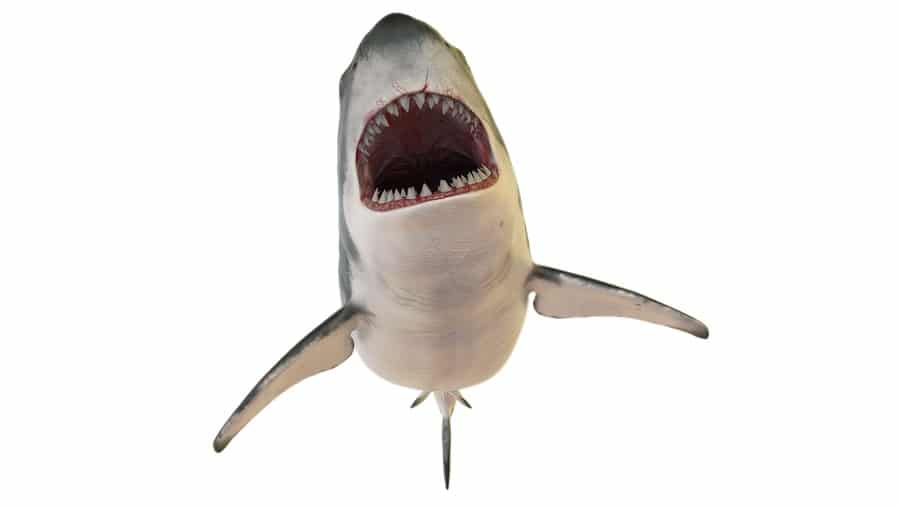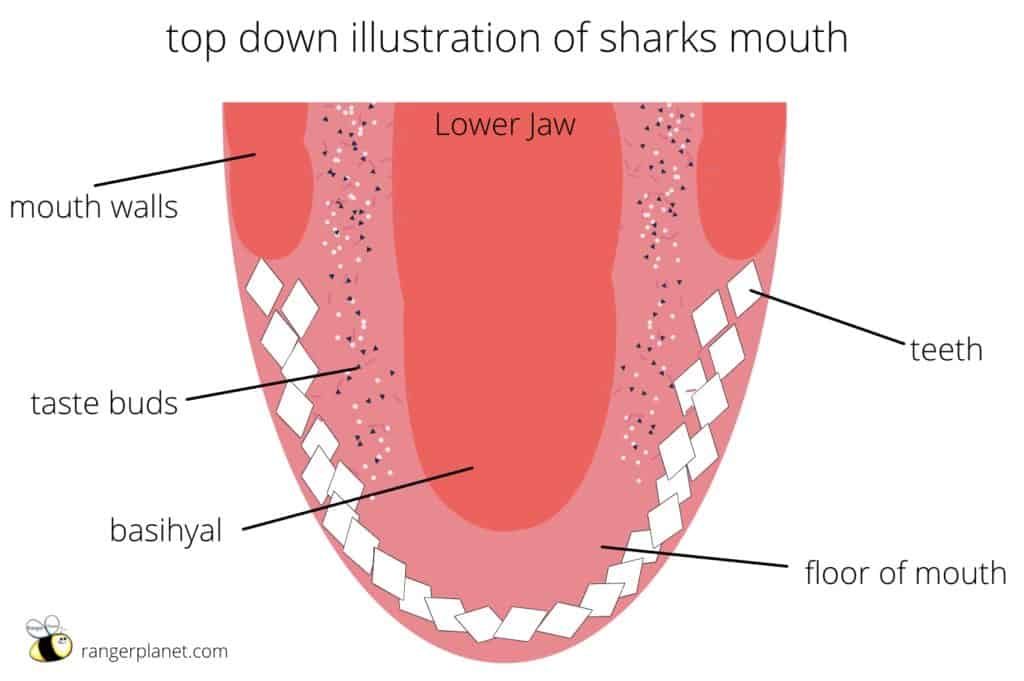Do sharks have tongues? You’re not alone. This article will give a clear understanding of if sharks have tongues, what are they made of, can they taste using it, and much more.
Sharks have tongues, which are known as “basihyal”, are short, stout, small, and not flexible, have no taste buds, and are not that useful. Only 3 sharks, carpet sharks, bullhead sharks, and cookie-cutter sharks have different tongues that are used to help eat food.
Read on, or watch the video below from the Ranger Planet Youtube Channel.
Sharks do have tongues
Sharks do have tongues, just like human beings and many many animals. But shark’s tongues don’t serve the same purpose as it does for human beings.
A human tongue serves different purposes – it’s a multi-purpose organ.
A human can use the tongue to taste the food, to move food around in the mouth, it is flexible and it also has many taste buds within the tongue.
In addition to this, obviously, humans use their tongues to talk. The human tongue is considered the strongest muscle in the body by mass.
But shark’s tongue does not serve these purposes. Most researchers believe a shark’s tongue to be a short, chubby, and immovable organ that serves no real purpose for the shark – not even the taste buds.
This is why a shark’s tongue or any other fish’s tongue is not called a tongue, they are called “basihyal”.
Cartilage
A shark’s body is entirely made out of cartilages, instead of bones. Sharks also don’t have ribs. Because they do not need a cage of bone to protect vital organs… Like the lungs. For “lungs” they have gills instead, through which they breathe.
With the shark’s body made out of cartilages, there’s a large portion of cartilage that stretches up to the mouth and provides support to these gills.
The very end of this large chunk of cartilage is where the tongue is positioned. More precisely the tongue or “basihyal” of sharks or any fish is located at the base of the shark’s mouth.
This positioning is also the same with human tongues. And that’s where any similarities end between a human and shark tongue.
Human tongues are flexible, strong, and useful. A shark’s tongue is a short, small, stout, and only vaguely tongue-like piece of cartilage.

Can sharks taste using their tongue?
It’s through their tongues that humans taste and so do many other animals, but surprisingly sharks do not have any taste buds in their tongues.
The taste buds of sharks are distributed around the inside of their mouth.
These taste buds are located under a special lining inside its mouth and throat. This lining is called the “Papillae”. So the tongue or the basihyal does not form part of the food tasting at all.
These taste buds are not highly sensitive, they only serve to let the shark know if the food is ok to edible enough to eat – sharks are not really considered fussy eaters!
They swim throughout the day looking for food and pretty much eat whatever that’s edible. they don’t really “taste” the flesh of their prey, they just eat whatever that’s edible.
Illustration of shark mouth
By way of illustrating how a sharks mouth is laid out. Here’s a very basic drawing of a sharks mouth, indicating the floor of the lower jaw, with placement of the tongue (or basihyal), and taste buds, in relation to the teeth.

Three sharks that use their tongues
Most sharks have tongues that are immovable and largely redundant. But there are some species of sharks that have tongues that serve a purpose. These are the carpet sharks, bullhead sharks, and cookie-cutter sharks
Carpet shark and bullhead shark tongues
Especially carpet sharks “orectoloboids” and bullhead sharks “heterodontoids” have different types of tongues than most other sharks.
They have tongues that are much larger, flattener, and more flexible and movable. this means that these sharks use can this tongue to suck on to prey in conjunction with using their powerful pharyngeal muscles.
But before they fully consume their prey, they first partially swallow the victim and use the taste buds in the mouth to identify if the prey is edible enough to swallow or not.
Therefore, if the taste buds sense a familiar and edible taste, that means the prey is ok to be consumed, so the prey will then move down the through towards the stomach and be ingested.
Cookie-cutter shark tongue
Another type of shark that has a different type of tongue is the cookie-cutter shark “Isistius spp”.
They have tongues or basihyal that are much larger than the usual sharks and are attached and strengthened by strong rectus cervicis throat muscles.
This structuring of the tongue means it’s attached to the throat muscles, rather than the floor of the mouth.
So this makes it easier for cookie-cutter sharks to suck “cookie-shaped” flesh bites out of their prey, mostly cetaceans, pinnipeds, pelagic fishes.
Cookie-cutter sharks rip their prey using their teeth opening the prey and then uses its basihyal to extract and suck the flesh and all the goodness.
The tongue for cookie-cutter sharks helps in use as an “oral vacuum” feeding strategy, which is sucking the flesh of the prey.
Sometimes humans bite their own tongue, it’s painful. So do sharks bite their own tongue? Let’s look at that next.
Do sharks bite their tongue?
With sharp and piercing teeth, it’s common to think sharks bite their tongue.
However, when it comes to sharks, a shark’s tongues perform or work just like humans. This means that sharks rarely bite their tongues. Here is a detailed explanation for you.
A shark’s tongue is mostly flat, immoveable, and largely secured to the floor of the mouth, but does have some flexibility.
The muscles are spread out and contain nerve endings called proprioceptors.
Proprioceptors continuously monitor and regulate muscle tension and position which send constant and necessary signals to the brainstem.
The brainstem is continuously informed of the position of the tongue. This allows the brainstem to fully coordinate what the tongue is doing, be it biting, chewing, and even the size of the food particles.
This proper coordination subconsciously avoids the tongue from being bitten.
A sharks sense of taste
Sharks do not have a highly developed sense of taste. Taste buds located in the mouth and throat lining only provide a yes or no confirmation of whether food is edible or not. There is no taste sensation associated with the taste buds. For them, it’s yes, ingest it, or no, don’t ingest it.
Can sharks stick their tongue out?
Sharks cannot stick their tongue out. For most sharks, the tongue is attached to the floor of the mouth, it’s made of cartilage, moves very little, and performs a limited function. They do not have a membrane under the tongue like humans do, and which allows us to have movement of the tongue.
More nature info…
I hope this has helped answer the question – do sharks have tongues. Perhaps you could outswim a shark? But can you outrun a moose? And there’s lots more to explore on rangerplanet, so check out my other articles.

